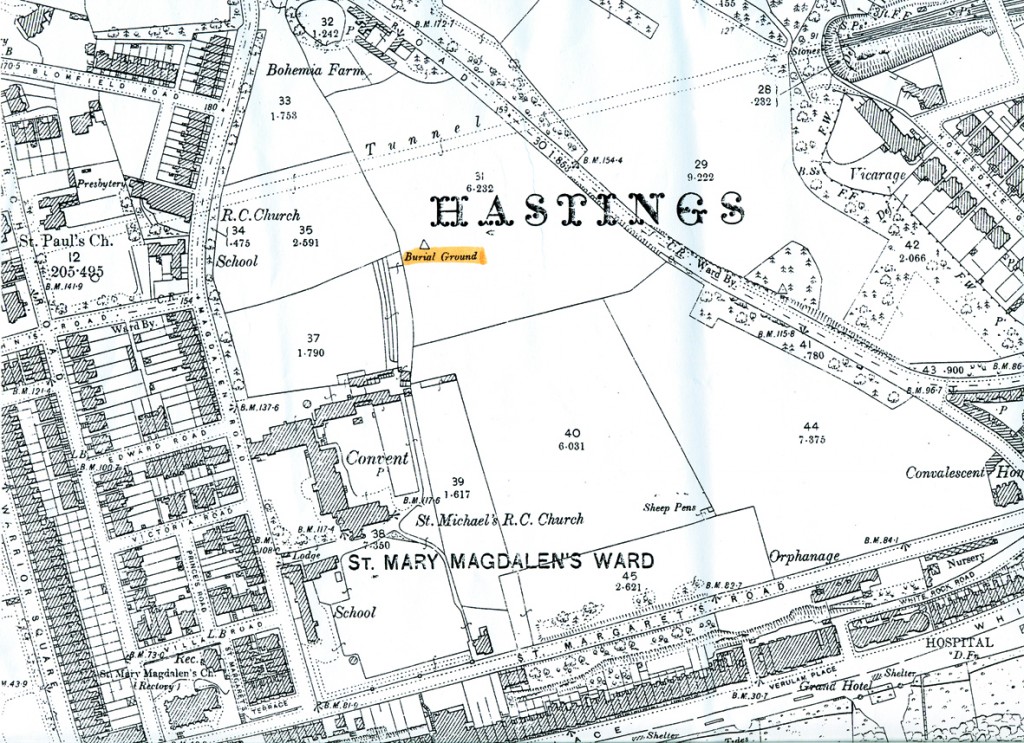Where was Bohemia Cemetery?
By Heather Grief
The burial ground found by Voice readers on old maps is not on the Oval as such, it is within the convent walls, and can only have been in use for a very short time, and only by nuns, the pupils attending their school and perhaps by local catholics.
Health risk
A small group of nuns running a boarding school in Derby was offered the land for a convent and they moved down here in 1850. That same year, Hastings adopted the Public Health Act and under its powers to regulate burials it opened Hastings Cemetery in 1855 on The Ridge and then proceeded to close all other burial grounds within the town, regardless of whether they posed a risk to health. The health risk was thought to come from the smells arising from too many bodies being squeezed into too little space, and the miasma theory of illness – that germs were spread via nasty smells in the air.
Burials
Towns and cities grew spectacularly in the 19th century and provision for burying the dead did not keep up. The Old Hastings Preservation Society asked if I knew where Bohemia Cemetery was, as a member of the public doing family history research had come across an ancestor buried there, but I am equally in the dark – I have found no mention of where it was. The last burials at the Magdalen Hospital chapel were in the 1620s, St Margaret’s churchyard having gone out of use much earlier. The last burials in St Michael-on-the-Rock’s graveyard, still visible on the cliff edge at St Michael’s Place, were in the 1540s [see Bohemia Farm to Summerfields Estate: a History] and after the 1620s, the small local population had to travel either to St Clement’s or to the Church-in-the-Wood to bury their dead.
Mystery
Since the burial referred to by David Russell [issue #77 of the Bohemia VillageVoice] was in 1872 and was a suicide, it is doubly impossible that the catholic burial ground was used. It is equally a mystery as to why a burial ground, presumably not owned by the Church of England, should be open after the mid 1850s. Charles Eversfield, as a big local landowner, may have had a burial ground somewhere in the Bohemia area that the Council was not able to close. Burials were normally organised by religious affiliation in corporation cemeteries and there was blatant discrimination – the Bishop of Exeter favoured solid masonry walls, at least 3ft high, to separate the Church of England burials from the rest. Yet the C of E could be the worst offender – St Mary’s Battle had a dark noxious liquid oozing through the graveyard walls (Cresy Report, 1850), the ground level was much higher inside the walls, due to the number of bodies buried over the centuries.
Heather Grief heather@grief64.fsnet.co.uk
Leave a Response
You must be logged in to post a comment.


